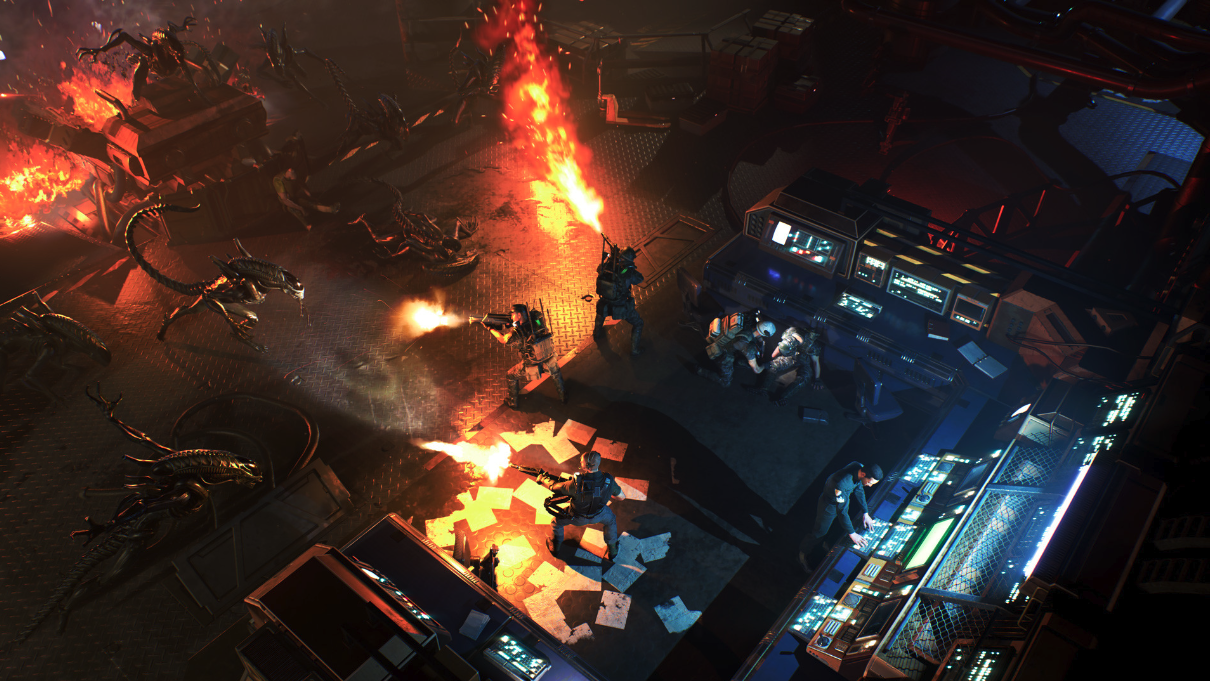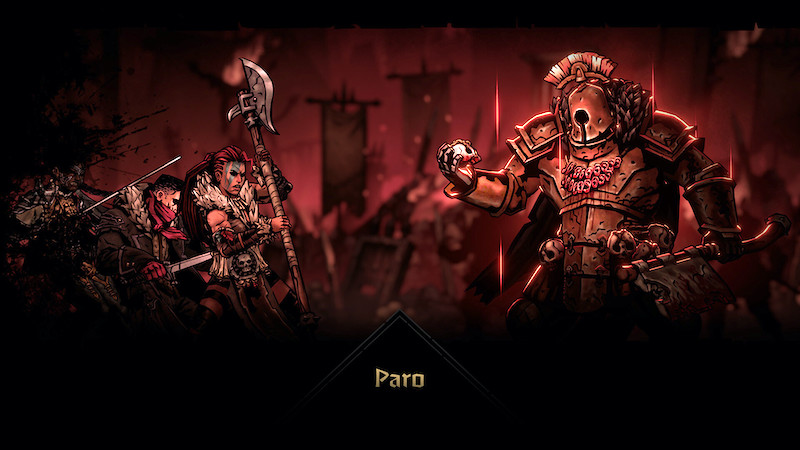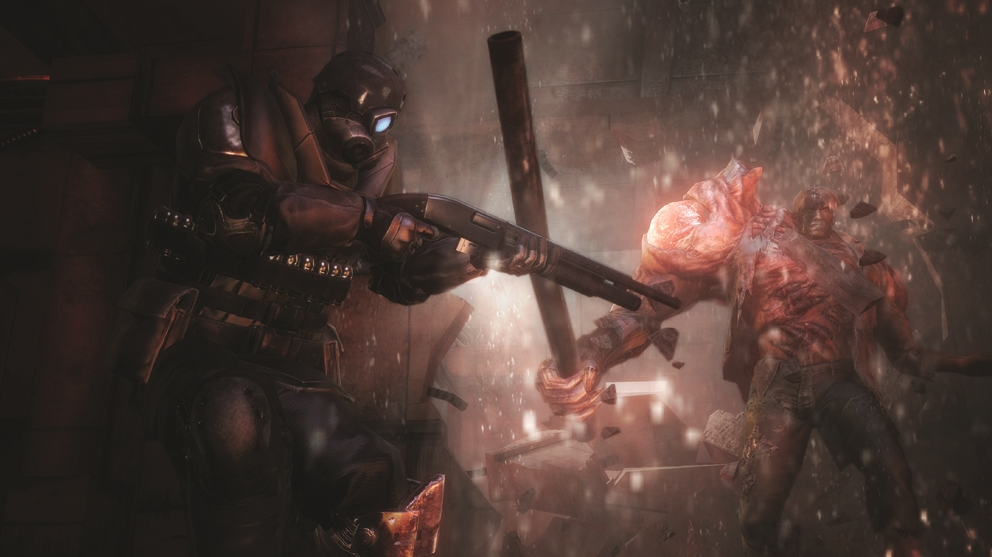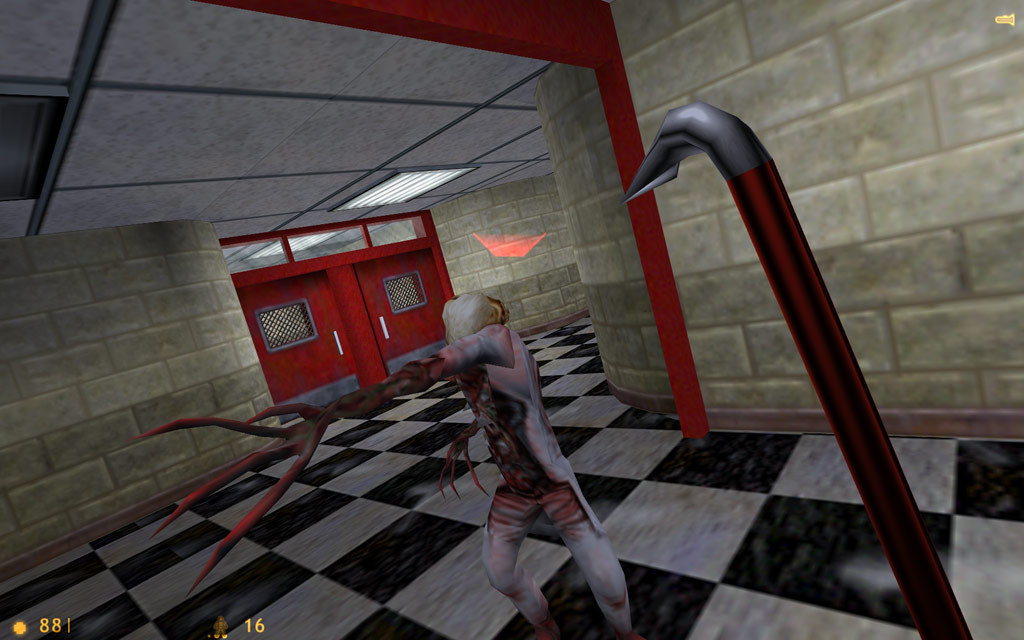
Monster Mania: The Expanded Universe Horrors of Aliens: Dark Descent
Monster Mania is a weekly column celebrating the unique and varied monster designs in horror gaming.
As deep-rooted as my love for the Aliens franchise is, there has been a glaring and recurring issue with most game adaptations; They explore too little of the franchise’s bestiary. Outside of series icons such as facehuggers, drones, and queens, xenomorphs’ extensive mutations are frequently absent. While you can’t exactly fault developers for straying far from three of the most prolific monster designs across all pop culture, it does limit general audiences’ exposure to the terrors of the Aliens’ extended universe. And for die-hard fans like myself, it can make these games feel a bit repetitive. Mowing down hordes of xenomorph drones or blowing up clusters of facehugger eggs will always be entertaining, but I am looking for more varied threats to face. Threats that I know exist within this universe.
So color me surprised when Aliens: Dark Descent, a top-down, real-time strategy game, would be the latest entry in the long line of Aliens games to explore this expanded bestiary while having an original monster design or two up its sleeve. Things begin simply enough. Your squad of colonial marines will face off against facehuggers and drones before a cinematic encounter with a queen. Routine stuff. Yet, how Aliens: Dark Descent gradually and organically introduces new morphologies fundamentally understands and captures the terror of the films.

One of the first special xenomorph types faced is the runner xeno from David Fincher’s highly underrated sequel 1992’s Alien 3. Runners result from facehuggers using a dog or other livestock as a host, giving the creature more animalistic qualities. While their design is not dissimilar to a drone’s, runners gallop on all fours, making them shock troopers of sorts that rush your squad, attempting to stagger them. Runners are a terrific example of how Aliens: Dark Descent is only the second Alien game, after Alien: Isolation, to capture the terror and tension of the films adequately.
Each xenomorph included in the extended bestiary serves a greater gameplay purpose other than just visual variations of these slimy predators. For example, the crusher, which resembles the dinosaur ankylosaurus, sports a massive protective shell with an elongated tail that allows them to deal with and take a walloping of damage. Viewing them simply as bullet sponges would be an oversimplification, as their purpose is twofold; knocking down your squad members and exacerbating their stress levels to their breaking point. Stress is easily the most fundamental mechanic of Aliens: Dark Descent, allowing it to capture that movie magic feel. The balance of monitoring and maintaining your squad’s stress is imperative, lest the player wishes to have soldiers lose their cool, as Hudson did.
Meanwhile, the player must contend with evolutionary xenomorphs like the Praetorian. If you will, a queen in training, Praetorian’s guard xeno hives and act as elite drones or warriors that will defend queens with their life. They are also more than willing to step up and fill the role of egg layer should a queen perish. It primarily serves as a tougher drone; however, this variation in xenomorph design allows Aliens: Dark Descent’s encounters to feel continually refreshing rather than laborious.

Aliens: Dark Descent’s expansion of the Alien universe’s bestiary is not solely reflected by xenomorphs but also by human monstrosities. A portion of the campaign focuses on a cult group known as the Darwin Era. Cultists have become indoctrinated into the belief that xenomorphs are a new evolutionary step for humanity (going so far as to offer their bodies as facehugger hosts willingly). This group births Aliens: Dark Descent’s latest addition to Alien lore in the form of guardians. Guardians are cultists who undergo a surgical procedure known as embryo stasis; they become an incubator for a xenomorph hatchling put in stasis.
Why do this? So they can walk amongst the xenomorphs, of course!
Guardians are not only a somehow more fucked up-looking version of the Borg, but more importantly, their transformation allows guardians to fight alongside xenomorph enemies without fear of being slaughtered themselves. This allows for engagements where players must contend with groups of xenomorphs (and their varied attack patterns and permutations) and guardian enemies that use traditional firearms. This continually forces players to shift their tactics, never allowing them to feel all too comfortable no matter how many missions they have undertaken.

As someone obsessed with all forms of Alien media for the better part of their life, I get that my want for games to explore Alien’s expanded lore isn’t exactly realistic. Whether it be Alien films or games, there is typically a risk, whether creatively or budgetary, for why most mainstream Alien media doesn’t stray far from the core three monsters. So when a game like Aliens: Dark Descent comes along and draws from that acid-for-blood family pool, it signifies that 44 years later, we have charted very little of what the xenomorphs have in store for us.
For more horror game reviews, opinions, and features, check out DreadXP.




